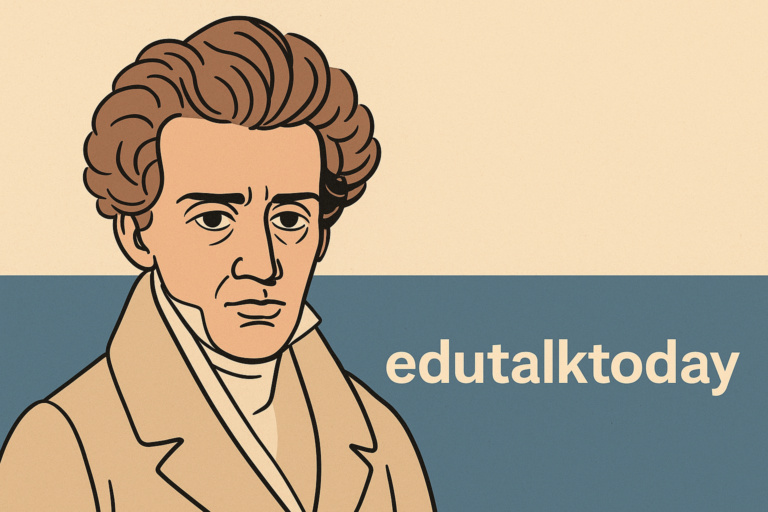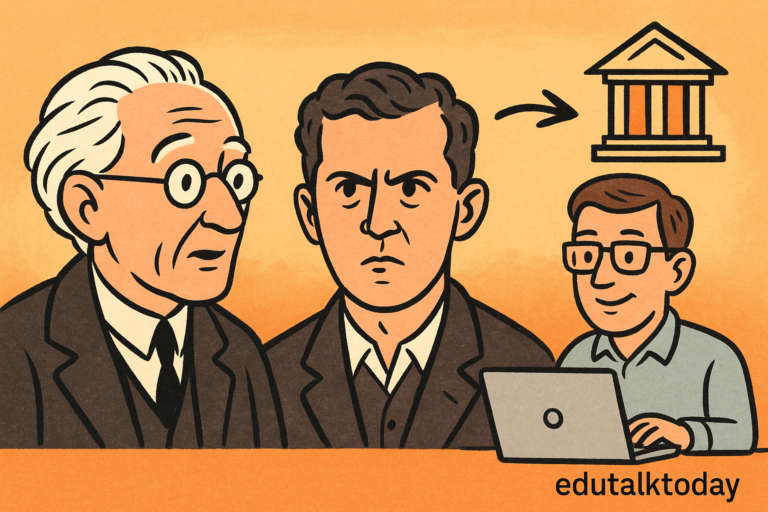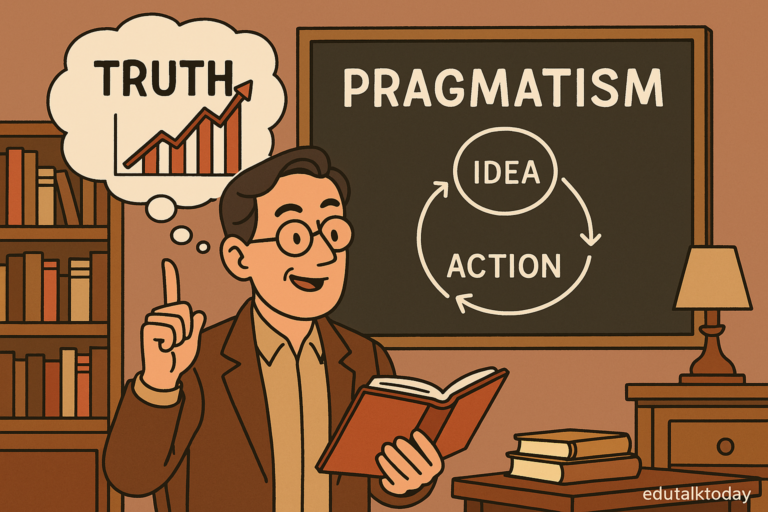How To Adopt a “Whatever Works” Attitude for Problem-Solving

Here’s the funny thing about being an expert: the deeper you go into your field, the easier it is to get trapped by it. I’ve caught myself doing it more times than I’d like to admit—defaulting to the same frameworks, reaching for the same models, confident they’ll work because they always have. But the more I talk to colleagues, the clearer it becomes that expertise can quietly turn into rigidity. And when the problem you’re facing doesn’t care about your go-to playbook? That rigidity isn’t strength—it’s a liability.
A “whatever works” mindset doesn’t dismiss expertise. It actually demands it. It asks you to know your tools well enough to recognize when to use them—and when to put them down. That’s the paradox. Sometimes the most expert move isn’t applying the method you’ve perfected, but abandoning it in favor of something that feels messy, even unorthodox, but actually works.
Why Flexibility Matters
Let’s be real: most of us didn’t get where we are by winging it. We studied, we trained, we ran the reps, and we became specialists. That’s the whole point of expertise, right? But here’s the catch—specialization can harden into habit, and habit can trick us into believing that our well-worn approach is always the right one. That’s the danger zone.
Cognitive science has a term for this: functional fixedness. It’s when we see a tool or concept only in the way we’ve always used it.
Classic example? In one experiment, people were given a candle, a box of tacks, and matches, and asked to attach the candle to the wall so it wouldn’t drip wax on the table. Most failed because they saw the box only as a container for the tacks, not as a shelf to hold the candle. That’s functional fixedness in action—and experts, ironically, are especially prone to it because we’ve reinforced particular patterns over years of practice.
Now, compare that with what researchers call adaptive expertise. Unlike “routine expertise” (where you’re amazing at applying established methods in familiar situations), adaptive expertise is about pivoting your knowledge into unfamiliar territory. It’s knowing not just what works in a controlled scenario, but what might work when everything goes sideways. Think of a surgeon improvising with unexpected complications mid-surgery, or an engineer hacking a temporary fix during a crisis because the proper solution would take too long. That’s adaptive expertise.
Here’s where the “whatever works” mindset earns its weight. It’s not about abandoning rigor or throwing methods out the window. It’s about expanding your tolerance for ambiguity and recognizing when your usual rigor is actually slowing you down.
Expertise vs. Adaptability in Practice
Take the example of NASA engineers during the Apollo 13 mission. When the oxygen tank exploded, the spacecraft’s systems began failing, and the crew was in real danger. The engineers couldn’t fall back on manuals—they had to improvise. They famously hacked together a CO₂ filter using plastic bags, cardboard, and duct tape. That solution wasn’t elegant, it wasn’t “by the book,” but it kept the astronauts alive. And isn’t that the ultimate measure? Not whether the solution looks like expertise, but whether it works.
I’ve seen this in my own circles too. A data scientist friend of mine once ditched their sophisticated predictive model during a critical client presentation. The model was technically brilliant but hard to explain. Instead, they used a simple regression line—something “beneath their level”—because it told the story clearly and got the buy-in they needed. Was it the most advanced solution? No. Was it the one that worked in that moment? Absolutely.
Why This Feels Hard for Experts
Let’s admit it: part of why we resist the “whatever works” approach is ego. We’ve spent years mastering complexity, so leaning on something simpler or unfamiliar can feel like betraying that investment. I’ve felt the sting myself—like, if I’m not flexing the fancy tools, am I even showing up as the expert in the room? But here’s the twist: real authority isn’t about showing off the hardest method. It’s about solving the problem.
Another reason it feels hard? Risk perception. Experts are often in high-stakes situations—surgery, finance, engineering—where mistakes carry weight. So we cling to what’s proven. But history is full of high-stakes moments where doing the “proven” thing would have been fatal. Adaptive expertise asks us to balance rigor with improvisation, and that balance is uncomfortable. But that’s where the breakthroughs happen.
Building Flexibility into Expert Practice
So how do we, as experts, actually practice this? Start by deliberately questioning your defaults. Before reaching for your favorite framework, pause and ask, “Is this the right tool, or just the one I’m most comfortable with?” I’ve done this in strategy sessions where the client expected me to use a tried-and-true approach. Sometimes I’ll push myself to introduce a method from a completely different discipline—say, design thinking exercises in a finance context—just to see what emerges. Often, the mashup produces fresh insights.
Another tactic is to treat experiments as legitimate outputs, not just stepping stones. In research, we sometimes dismiss messy prototypes or partial answers because they’re not publishable or polished. But those scrappy versions often reveal what “works” more honestly than the perfect model. The Apollo engineers didn’t publish a paper on their duct-tape filter. They just made it.
Lastly, embrace what I like to call solution pluralism. This is the idea that multiple answers can be valid simultaneously, depending on the context. As experts, we’re trained to find the “best” solution, but sometimes the problem doesn’t need the best—it needs one that works right now. The trick is to hold onto your deep knowledge while letting go of the need for it to always shine in the spotlight.
Here’s the takeaway so far: being an expert doesn’t mean clinging to your methods at all costs. It means knowing when to step outside them, even if it feels uncomfortable, and trusting that your experience gives you the judgment to pull it off. That’s the essence of the “whatever works” mindset—not chaos, but flexibility powered by deep expertise.
How to Practice a “Whatever Works” Mindset
Here’s where things get practical. Theory’s nice, but the whole point of a “whatever works” attitude is that you can use it when you’re actually in the weeds with a problem. What I’ve found is that it’s not about flipping some magical switch that makes you flexible forever. It’s about building habits, ways of thinking, and even small rituals that keep you from locking into one path when a dozen others might work better.
I’ll walk you through some of the practices I’ve seen work—not just in my own messy problem-solving attempts, but also in the work of people way smarter than me. Some of these will sound simple, almost too simple, but that’s the point. The “whatever works” mindset isn’t fancy—it’s practical.
Context Before Tool
The easiest mistake to make is reaching for your favorite hammer before you’ve looked closely enough at the nail. We do this because familiarity is comforting. A project manager I know once tried to apply a waterfall-style roadmap to a situation that was pure chaos—fast-moving, unpredictable, with dozens of unknowns. Of course, the plan fell apart. When he finally stepped back, he realized agile stand-ups and weekly micro-goals were a better fit. Nothing about the situation had changed; only his lens had.
The habit here is simple: before you pull out your go-to method, stop and ask, “What’s really going on here?” Don’t commit to a tool until you’ve honored the context.
Borrow Shamelessly
One of my favorite things about experts who thrive in unpredictable situations is how shameless they are about stealing from other fields. I once worked with a surgeon who borrowed ideas from jazz improvisation to help his team handle unexpected complications in the operating room. He literally studied how musicians signal shifts mid-performance and adapted those cues into surgical teamwork. Brilliant.
We should all be doing this more often. Business leaders pulling from theater, engineers pulling from anthropology, teachers pulling from UX design—there’s no rule that says expertise has to stay in its lane. Sometimes the best way to solve your problem is to look at how someone in a completely different arena solved theirs.
Prototype, Don’t Pontificate
Experts love to talk. I say this with love because I’m guilty too. We analyze, debate, and model. But there’s a reason designers swear by prototyping. You learn more in five minutes of testing something rough than you do in five hours of discussion.
Take the example of a research lab I followed that was working on low-cost medical devices for rural clinics. Instead of designing the “perfect” device up front, they started with cardboard cutouts and string, showed them to doctors, and asked for feedback. Every ugly prototype got them closer to a functional, affordable solution. If they’d waited until they had a polished prototype, they’d still be in the workshop.
Prototyping is humility in action. It says, “I don’t know if this will work, but I’m willing to find out quickly.”
Treat Constraints as Prompts
This one’s tough, especially for experts who are used to having control. But constraints can be your best creative ally. Remember Apollo 13’s duct tape filter? That wasn’t built in spite of constraints—it was built because of them.
In my own work, some of the most useful solutions came when budgets were slashed or timelines got ridiculous. A data-heavy project I once worked on had its funding cut midstream, so instead of a sprawling machine learning system, we built a lightweight dashboard using off-the-shelf tools. Honestly? It ended up being more valuable to the client because it was simpler and easier to maintain. The constraint forced clarity.
When you catch yourself thinking, “If only I had more time/money/data…,” try flipping it. Ask, “What does this constraint make possible that abundance wouldn’t?”
Detach from Authorship
This one stings a little. Experts like to be seen as the authors of clever solutions. I know I do. But sometimes the best move is to let go of that attachment.
A friend in academia once told me about a conference where her idea was essentially hijacked by a colleague who rephrased it in simpler terms and ran with it. She was frustrated—until she realized the idea was actually gaining traction because of his framing. She had to decide: cling to ownership and watch the idea fizzle, or let it go and see the concept flourish. She chose the latter.
In problem-solving, detaching from authorship means caring more about the solution existing than about your name being stamped on it. That’s not always easy for the ego, but it’s vital if the goal is impact over recognition.
Here’s the throughline: all of these practices—pausing for context, borrowing across fields, prototyping fast, reframing constraints, detaching from authorship—are ways of keeping yourself loose, curious, and willing to shift. The “whatever works” mindset isn’t anti-expertise. It’s expertise with its guard down, willing to be surprised.
Real-World Examples of “Whatever Works”
So far we’ve talked theory and practice, but let’s dig into some real-world examples where this mindset isn’t just nice—it’s survival. These aren’t abstract stories; they’re lived proof that solutions don’t have to be perfect to be powerful.
Crisis Response
Crisis situations are the ultimate testing ground for “whatever works.” The usual playbooks? Out the window. In 2010, when Haiti was hit by a devastating earthquake, local radio stations became lifelines. But many of them were destroyed. So what did people do? They rigged up makeshift broadcasting equipment from car batteries and speakers. Engineers, journalists, even regular folks cobbled together systems that reached thousands.
I remember reading that some aid workers were stunned by the ingenuity—it wasn’t pretty, but it got information to people who desperately needed it. That’s “whatever works” at its rawest.
Scientific Research Under Pressure
Science isn’t always slow and methodical. During the COVID-19 pandemic, researchers had to get creative with limited resources. Labs around the world hacked together testing kits from whatever reagents they could access, often borrowing equipment from unrelated research fields. Some even used 3D printers to create swabs and PPE when supply chains collapsed.
What struck me is how many of those “stopgap” measures ended up sticking around. A 3D-printed ventilator part, built in a pinch, later became a low-cost option for hospitals in resource-limited settings. Sometimes what starts as improvisation turns into a new standard.
Tech Teams in Unpredictable Environments
In the tech world, we love shiny tools and big architectures. But the truth is, some of the most reliable systems were born out of scrappy, last-minute hacks. A story I love: a fintech startup that ran out of time to build a proper fraud detection model before launch. Instead, they created a Google Sheet where suspicious transactions were flagged manually by interns. Primitive? Totally. But it caught fraud early, bought them time, and eventually gave them the labeled data they needed to build a real model.
That’s the thing—the temporary hack doesn’t disqualify you as an expert. It buys you survival, learning, and sometimes even a better long-term solution.
Interdisciplinary Innovation
Some of the best breakthroughs happen when “whatever works” means crossing boundaries. The classic example is Alexander Fleming’s discovery of penicillin. He wasn’t hunting for a wonder drug—he was dealing with contaminated Petri dishes. Instead of tossing them out, he noticed the mold killed bacteria. That “mistake” turned into one of the most important medical breakthroughs in history.
On a smaller scale, I’ve seen climate scientists collaborate with game designers to model human behavior around conservation. The game mechanics—points, rewards, challenges—ended up helping communities shift habits more effectively than any traditional policy framework had managed. That’s “whatever works” as innovation fuel.
The Bigger Lesson
All these stories point to the same thing: what makes a solution legitimate isn’t how elegant it is, or how well it aligns with established doctrine, but how effectively it meets the need.
Experts sometimes get hung up on elegance, on the solution being not just right but “proper.” But the messy hacks, the improvised stopgaps, the ideas borrowed from left field—they work because they respect the problem more than the discipline. And isn’t that what problem-solving should be about?
When we stop insisting that expertise has to look a certain way, we unlock a bigger, more generous toolkit. That’s what the “whatever works” mindset gives us: permission to care less about how the solution looks, and more about whether it delivers.
Final Thoughts
Adopting a “whatever works” mindset isn’t about lowering standards. It’s about refusing to let expertise harden into dogma. It’s knowing your field deeply enough to step outside it when the situation demands. Sometimes that means duct tape and cardboard. Sometimes it means stealing an idea from jazz or design thinking. Sometimes it means letting go of ownership altogether.
The real flex of expertise isn’t sticking to the playbook—it’s knowing when to throw the playbook away.





